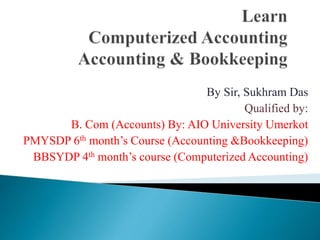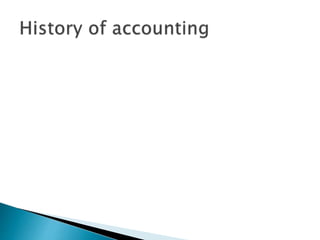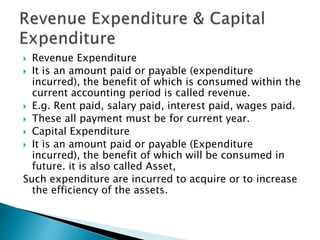This document defines key accounting terms and concepts. It discusses the different types of businesses (manufacturing, trading, servicing, hybrid), business organizations (sole proprietorship, partnership, corporation), and the basic accounting equation (assets = liabilities + equity). It also explains double-entry bookkeeping, common accounts (assets, liabilities, equity, revenue, expenses), accounting journals, and accounting transactions.



















































